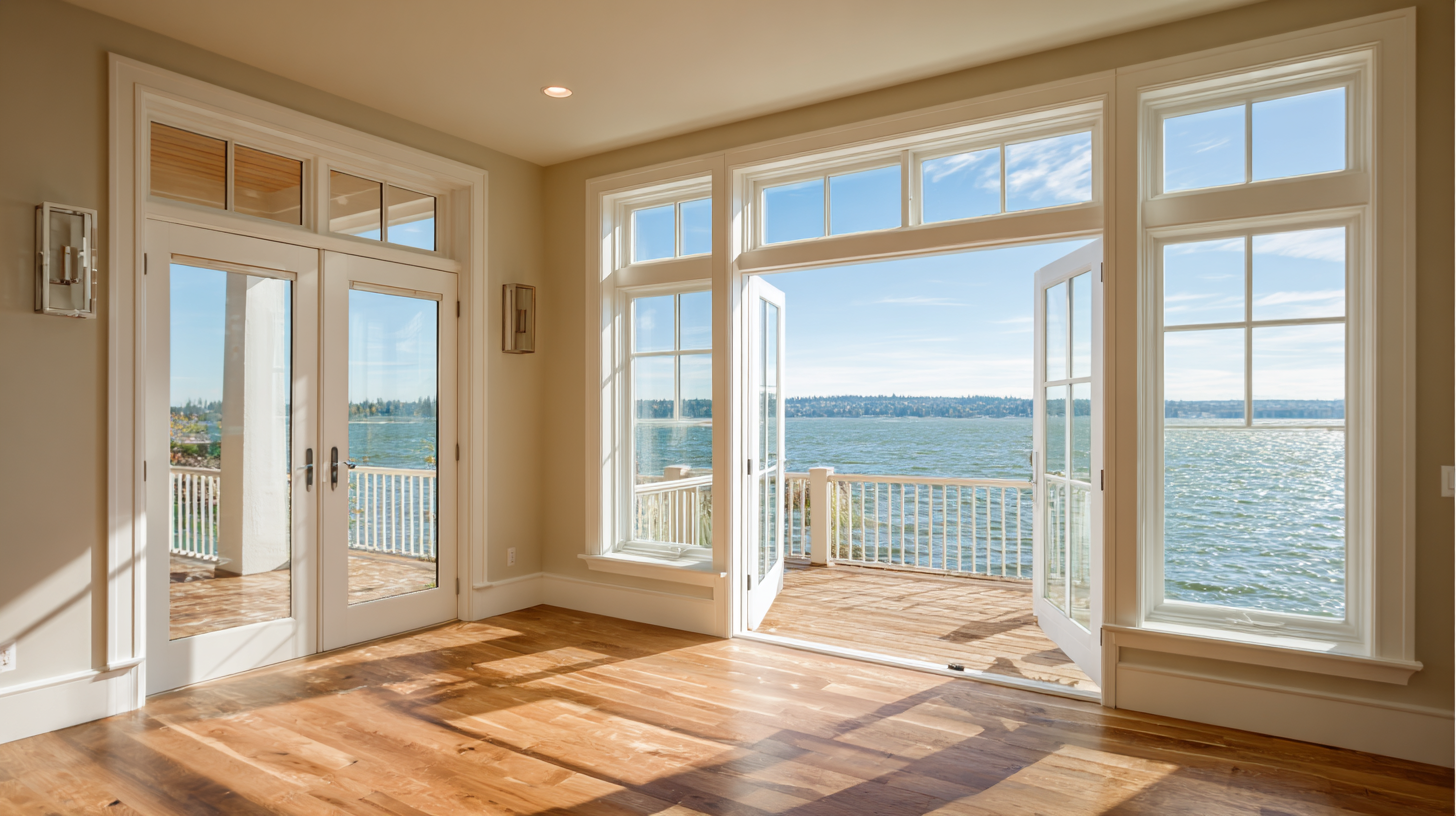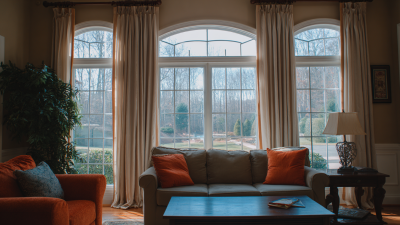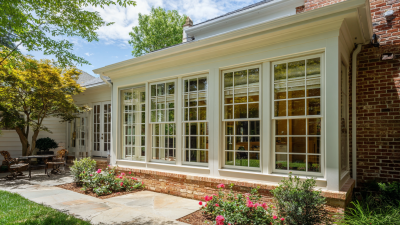5 Expert Tips for Windows and Doors Installation to Boost Energy Efficiency by 30 Percent
In recent years, the importance of energy efficiency in residential construction has become paramount, particularly as homeowners seek to reduce utility costs and minimize their environmental impact. According to the U.S. Department of Energy, nearly 30% of a home's heating and cooling energy is lost through inefficient windows and doors. This staggering statistic highlights the critical role that proper windows and doors installation plays in enhancing a building's energy performance. By adhering to industry best practices, homeowners can significantly boost their energy efficiency, potentially achieving up to a 30% improvement. As the demand for sustainable living increases, understanding the nuances of windows and doors installation is not just beneficial but essential for modern homeowners looking to optimize their living spaces while contributing to a healthier planet.

Understanding the Importance of Proper Windows and Doors Installation for Energy Efficiency
Proper installation of windows and doors is crucial for enhancing energy efficiency in residential and commercial buildings. According to the U.S. Department of Energy, improper installation can lead to energy losses of approximately 30 percent. This significant figure highlights how even the high-quality windows and doors can fail to perform if not installed correctly. Sealant and insulation around frames, as well as ensuring the units are level and plumb, are essential to achieving optimal performance and preventing air leaks that compromise comfort and energy use.
Moreover, the National Renewable Energy Laboratory emphasizes that energy-efficient windows can reduce heating and cooling costs by 10 to 25% when accurately installed. Factors such as the choice of glazing, frame materials, and proper weatherstripping directly influence energy consumption. Homeowners and builders must prioritize qualified installation professionals who follow industry standards to realize these efficiency gains. Investing in quality installation not only enhances the efficacy of the energy-efficient materials but also supports long-term savings on energy bills while contributing to sustainability efforts.
Selecting Energy-Efficient Materials: What to Look For in Windows and Doors
When selecting energy-efficient materials for windows and doors, a few key factors should guide your choices. First, look for windows and doors with a high energy performance rating. These ratings often indicate the unit's ability to minimize heat transfer, which directly impacts your home's energy consumption. Look for labels such as ENERGY STAR and options that specify low U-values or high R-values, as these measurements will give you an idea of how well the materials insulate.
Another critical factor is the type of glazing used in windows. Double or triple-glazed units provide better thermal performance compared to single-pane alternatives. Additionally, consider low-emissivity (Low-E) glass, which reflects infrared light while allowing visible light to pass through, helping reduce energy loss in both winter and summer. For doors, ensure they have good weather stripping and are constructed from materials with good insulating properties, such as fiberglass or solid wood, which can further enhance their energy efficiency. By focusing on these materials, you can significantly reduce your energy bills and improve comfort in your home.
Energy Efficiency Comparison of Different Window and Door Materials
Essential Tools and Techniques for Accurate Measurements During Installation
When it comes to installing windows and doors, accuracy in measurement is paramount to enhancing energy efficiency. According to the U.S. Department of Energy, improper installation can lead to air leaks, compromising heating and cooling systems and potentially increasing energy costs by up to 30%. Utilizing essential tools such as laser levels, measuring tapes, and digital calipers can significantly improve the precision of your installation process. These tools help to ensure that frames are square and properly aligned, which is critical for effective sealing.
In addition to tools, following specific techniques can further enhance measurement accuracy. For instance, the National Fenestration Rating Council (NFRC) emphasizes the importance of measuring from multiple points to account for any irregularities in walls and floors. Implementing a double-check system—where measurements are verified by a second person—encourages consistent accuracy. Small discrepancies in measurements can lead to greater issues down the line, reducing the potential energy-efficient benefits that correctly installed windows and doors can achieve. Thus, taking the time to focus on precise measurements is not just a detail but a vital step toward maximizing energy savings.
5 Expert Tips for Windows and Doors Installation to Boost Energy Efficiency by 30 Percent
| Tip | Description | Potential Energy Savings (%) | Required Tools |
|---|---|---|---|
| Measure Twice | Ensure accurate measurements to prevent gaps that can lead to air leaks. | 10 | Tape Measure, Level |
| Select Quality Materials | Invest in energy-efficient windows and doors to maximize insulation. | 15 | Utility Knife, Caulking Gun |
| Proper Weatherproofing | Seal gaps and cracks to improve energy efficiency and prevent drafts. | 20 | Weatherstrip, Sealant |
| Install with Care | Follow installation guidelines to ensure structural integrity and performance. | 5 | Drill, Screwdriver |
| Regular Maintenance | Inspect windows and doors periodically to ensure they remain efficient. | 5 | Cleaning Supplies |
Common Mistakes to Avoid When Installing Windows and Doors
When installing windows and doors, avoiding common mistakes can significantly enhance energy efficiency. One frequent error is improper sealing. Gaps around windows and doors can lead to drafts, which not only decreases comfort but also increases energy bills. It's crucial to use high-quality caulking and foam sealants to ensure a tight fit and prevent air leaks. Double-checking for any gaps during installation can save energy in the long run.
Another mistake is neglecting proper insulation. Insufficient or poorly installed insulation around windows and doors can result in heat loss during winter and heat gain in summer, making HVAC systems work harder. Opting for double or triple-pane glass and ensuring the framing is well-insulated can yield substantial energy savings. Additionally, ensuring that frames are level and plumb during installation helps maintain the integrity of the weather sealing, further improving efficiency.

How to Ensure Proper Sealing and Insulation for Maximum Energy Savings
When installing windows and doors, proper sealing and insulation are crucial to maximizing energy efficiency. One of the most effective ways to ensure airtightness is to use high-quality weatherstripping around the frames. This material minimizes drafts and reduces heat loss during winter months while keeping cool air inside during summer. Additionally, employing caulking to seal gaps around windows and doors can prevent moisture intrusion, which can enhance indoor air quality and overall comfort.

Choosing double or triple-pane windows also contributes significantly to insulation. These types of windows have multiple layers of glass that trap air or gas between them, creating a barrier against the outside temperature. For doors, consider selecting models with insulated cores to further reduce energy transfer. Additionally, proper installation techniques, such as ensuring that frames are plum and level, can prevent air leaks and improve the overall effectiveness of the seal. These strategies collectively play a vital role in boosting energy efficiency by as much as 30 percent, resulting in substantial savings on energy bills.
Related Posts
-

5 Essential Tips for Choosing the Right Window Replacements for Your Home
-

7 Smart Benefits of Choosing Windows for My House
-

What is the True Cost of Window Replacement? A Detailed Breakdown with Industry Insights
-

Unlocking Potential: The Ultimate Guide to Retrofit Windows for Energy Efficiency and Modern Living
-

7 Essential Tips for Choosing Vinyl Windows: Boost Your Home's Energy Efficiency by Up to 30%
-

7 Tricks for Accurate Window Replacement Cost Estimator That Buyers Must Know
